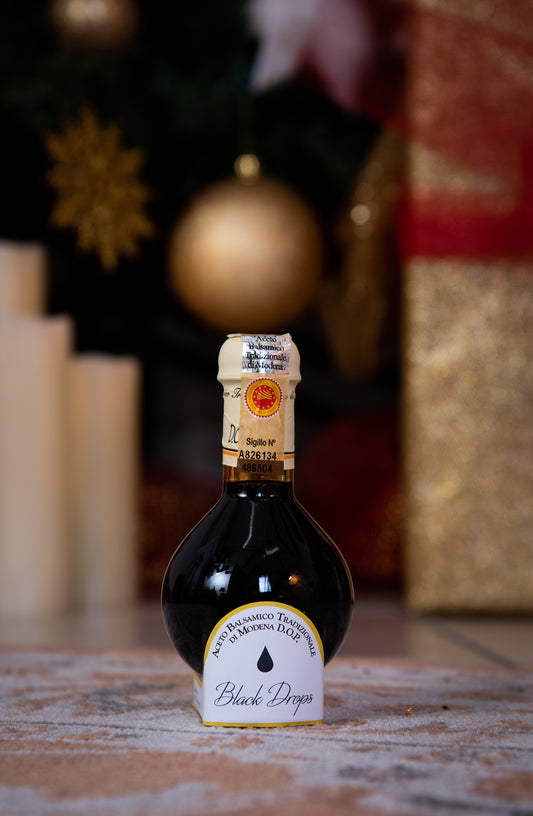Vinegar has made its appearance in the kitchen since ancient times, this succulent condiment dominated the tables of the Roman patricians in a container called acetabulum. There are many recipes that have come down to us, in particular those taken from the famous book ''De re coquinaria'' written by Marco Gavio Apicius, considered the first cook in history. Very rich and greedy, Marcus Gavius Apicius lived at the time of Tiberius, and marked history for his culinary extravaganzas : delicacies based on camel heels, sauces of combs cut from live birds, red mullet left to die in garum (a condiment obtained from fish entrails left in salt for some time, similar to our contemporary anchovy sauce), geese fattened in dried figs and stuffed with mulsum, tongues of nightingales, peacocks and flamingos.
The ingredients that always recur in the recipes are spices and ''strong flavours'' such as garum, cooked and congealed must, vinegar, pepper, coriander, honey, wine, cumin, oil and rue (aromatic herb), perhaps to cover and mask the ''scents and flavors'' of meat and fish that are not really ''fresh of the day'', as there is no refrigerator yet.
The "De re coquinaria" is a work made up of recipes for sauces and complete dishes, of which many desserts and above all sauces took their name from Apicius. These recipes perhaps today would not be replicable word for word, but by substituting a few ingredients it is possible to give life to a banquet steeped in history, such as, for example, pork tenderloin in wine sauce and balsamic vinegar . Let's see this recipe adapted to the present day!
Ingredients: 1 pork fillet (600-650 g), 50 ml balsamic vinegar, 500 ml meat broth, 1 glass of red wine, coriander, 1 pinch of cumin, oregano and celery, 1 drizzle of EVO oil, flour to taste, to taste salt, pepper to taste.
Wash the pork tenderloin and pat it dry with paper towels. Flour each slice well without neglecting the sides. Heat a non-stick pan, pour 1 drizzle of EVO oil, a drizzle of broth, a handful of leeks and coriander, salt to taste and brown the meat over high heat for 2-3 minutes on both sides. Color halfway through cooking with half a glass of red wine. In a mortar put a pinch of pepper, cumin, oregano and celery. Chop everything and pour a spoonful of Balsamic Vinegar, add the other half glass of wine and mix everything. Pour the mixture over the fillet, lower the heat, cover the pan with the lid and cook over low heat for about 15-20 minutes, adding broth if needed. Serve after sprinkling with pepper.
We advise you to use Sigillo Oro - Balsamic Vinegar of Modena IGP - Acetaia La Bonissima , excellent to use both for cooking and for dressing fresh salads.
Let us know if you've tried the recipe!








